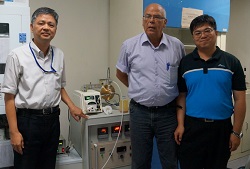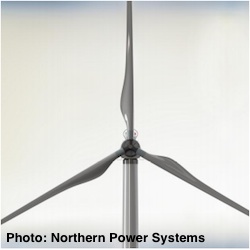President Obama needs to overrule this misguided proposal from the EPA before it is too late and these new technologies move overseas. The fate of America’s advanced biofuel industry, along with the President’s clean energy legacy, are resting on his decision. Fuels America USA Today print ad
“Tell President Obama, stop playing politics – fix the RFS.” American Petroleum Institute TV ad
 Both the American Petroleum Institute and Fuels America unveiled new media campaigns this week targeted at telling the White House what to do when it comes to volume obligations under the Renewable Fuel Standard (RFS). Both organizations held conference calls with reporters to announce the new campaigns.
Both the American Petroleum Institute and Fuels America unveiled new media campaigns this week targeted at telling the White House what to do when it comes to volume obligations under the Renewable Fuel Standard (RFS). Both organizations held conference calls with reporters to announce the new campaigns.
The single, full page, USA Today ad that will run during Climate Week September 19-21 is a sharp contrast to the oil industry’s multi-million dollar television, radio, and online advertising campaign. “This has been a David and Goliath struggle all along,” said Brent Erickson with the Biotechnology Industry Organization on behalf of Fuels America. “The biofuels industry has been struggling against this Goliath oil industry that has spent millions and millions of dollars on ads.”
The biofuels industry ad stresses the opening of the first large, commercial-scale cellulosic ethanol plants this year and warns that “the companies and investors looking to deploy the next wave of cellulosic ethanol facilities have put U.S. investment on hold” until a decision on the future of the RFS is made. The API ad calls the RFS “Washington red tape” and blames ethanol for raising food prices and contributing to hunger, even though corn prices are lower than breakeven for farmers this year, according to National Corn Growers Association Vice President of Public Policy Jon Doggett. “We are selling corn today at about 35% of what we did just a couple of years ago, certainly below the cost of production for many of our growers,” he said.
API’s Bob Greco says they launched their campaign in part because of recent statements from EPA Administrator Gina McCarthy that the agency will raise ethanol requirements based on the latest gasoline demand figures for 2014. “Unfortunately, the administration seems to be playing politics with the RFS rule instead of doing what’s best for consumers,” Greco said. “You don’t have to be a political insider to see how the Iowa Senate race—and the White House fear of losing control of the Senate—plays into this decision.”
“Politics are being played on this issue by both sides,” said Doggett. “I don’t think anyone should be surprised.”
Fuels America is a “coalition of organizations committed to protecting America’s Renewable Fuel Standard and promoting the benefits of all types of renewable fuel already growing in America.” API is the “only national trade association that represents all aspects of America’s oil and natural gas industry.”
Listen to the Fuels America call, which also includes comments from POET-DSM’s Steve Hartig: Fuels America RFS Campaign call
 Biodiesel advocates in Iowa are recognizing that state’s governor for his efforts to support the green fuel. At today’s annual meeting of the Iowa Biodiesel Board (IBB), Governor Terry Branstad picks up the “Biodiesel Champion” award.
Biodiesel advocates in Iowa are recognizing that state’s governor for his efforts to support the green fuel. At today’s annual meeting of the Iowa Biodiesel Board (IBB), Governor Terry Branstad picks up the “Biodiesel Champion” award.











